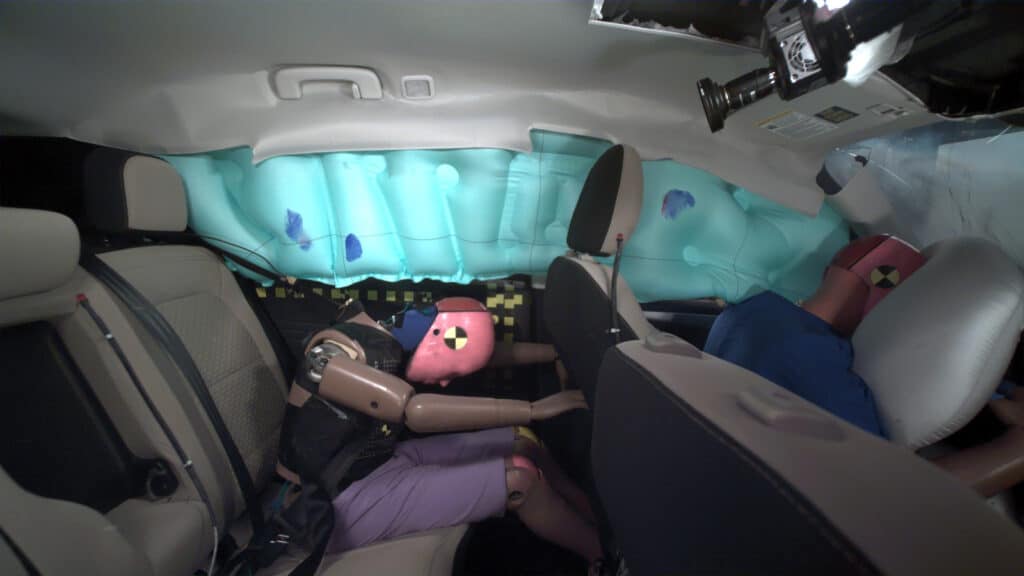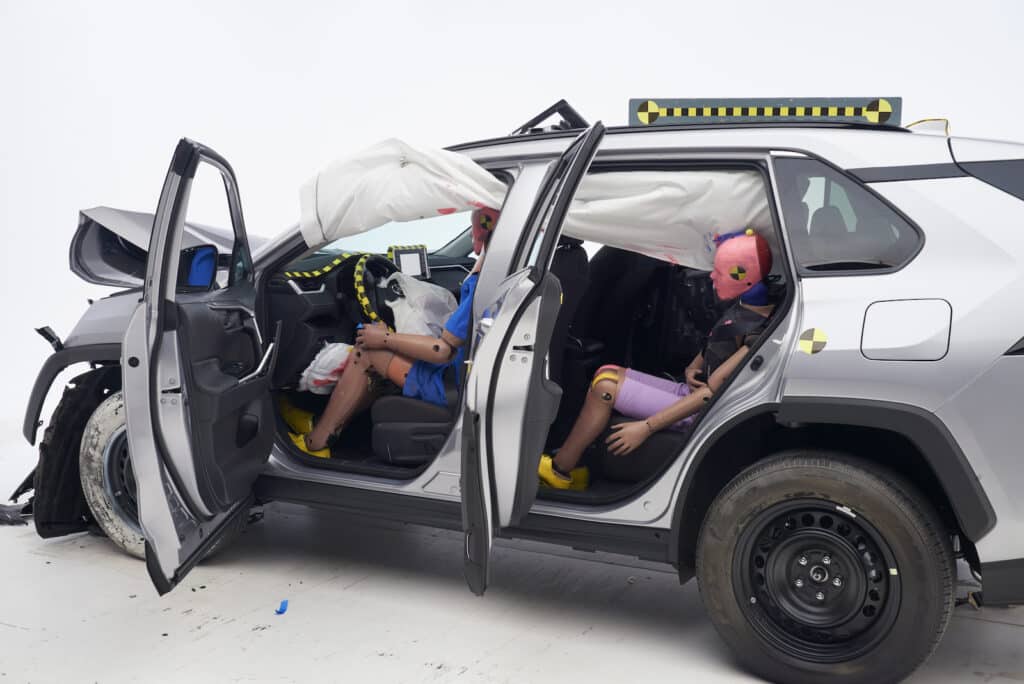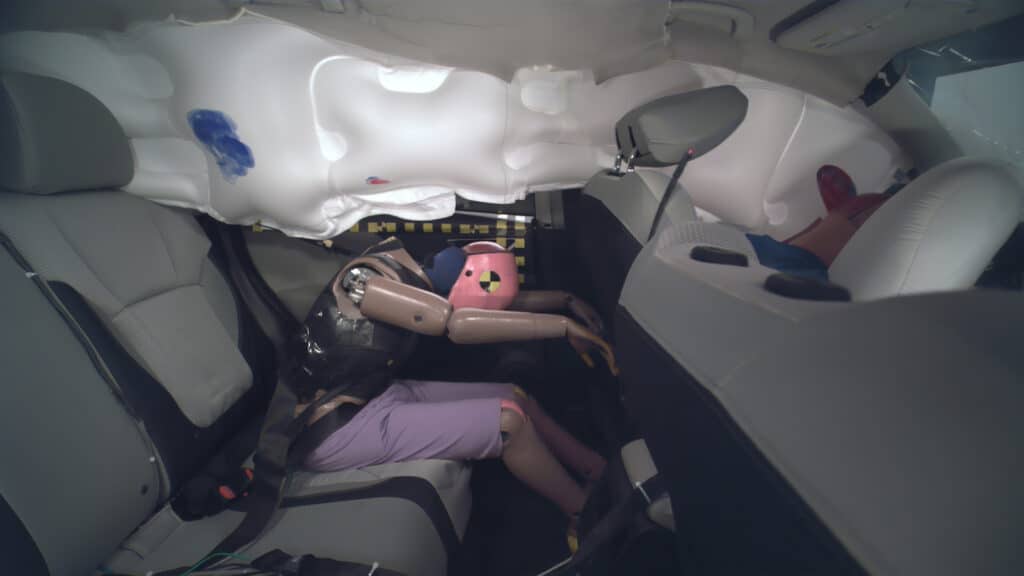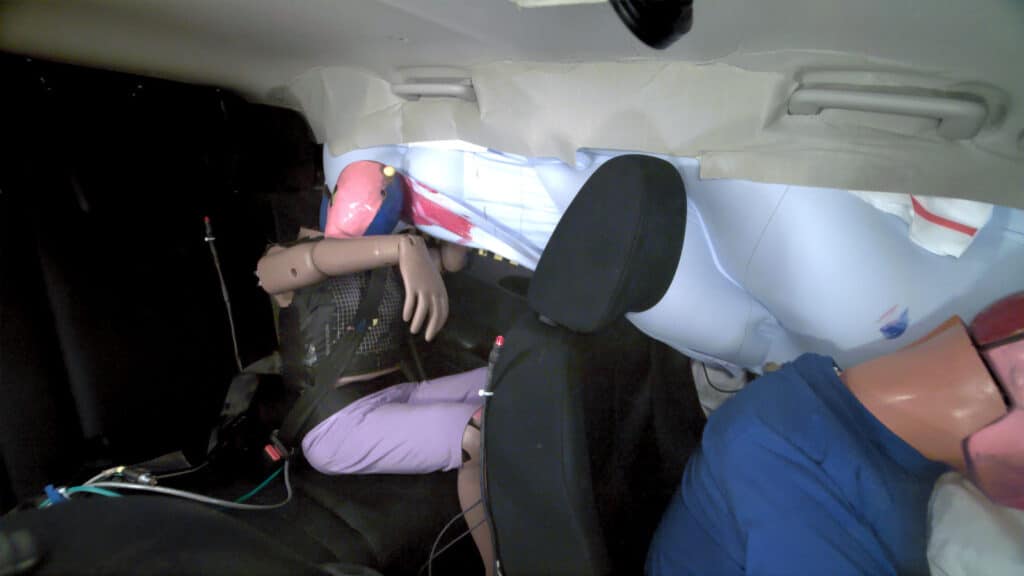
The latest crash tests from the Insurance Institute for Highway Safety suggest one of America’s most popular types of vehicles isn’t nearly as safe as many believe it to be.
In the Insurance Institute for Highway Safety’s, or IIHS, most recent tests of compact crossover SUVs, it found nine out of 15 small SUVs tested earned the lowest rating of “Poor” in the organization’s new test designed to improve rear seat passenger occupant protection.
The test results are particularly concerning as compact utility vehicles, or CUVs, are the second most-popular vehicle type in the U.S. after midsize utility vehicles, according to Cox Automotive, with a 15.5% market share. And those most likely to be in the rear seat are children.
In IIHS’s initial assessment, all 15 vehicles received “Good” ratings. But the IIHS’s more stringent test requires the second-row dummy’s sensors must not indicate an excessive injury to the head, neck, chest, abdomen or thigh in order to receive a “Good” rating. What resulted was the majority of CUVs falling short in protecting the head and neck of the back passenger — the body parts most at risk.
What the tests reveal

Of the 15 small SUVs, the Ford Escape and Volvo XC40, protect rear occupants well enough to earn a good rating. Additionally, there was no excessive pressure applied to the dummy’s chest, no shoulder safety belt strap misalignment, no submerging under the lap belt, and no side curtain airbag malfunction.
The head of the rear dummy in the Escape, however, was too close to the front seatback. The Escape’s rating is valid for models built after May 2022, when Ford modified the rear seat belts.
Of the other CUVs, only the Toyota RAV4 earned an “Acceptable” rating, with head, neck, chest and lower extremity measurements of the rear dummy showing a minimal injury risk. However, the lap belt on the second-row dummy shifted from the pelvis to the abdomen, increasing the risk of injury. And during the collision, the rear passenger’s head dropped below the side curtain airbag, rebounding between the airbag and window.
It gets worse from here

Another three vehicles merited only a “Marginal” rating, with heightened risks of head and neck injuries in the Audi Q3 and Nissan Rogue, as well as a rear lap belt that slid from the pelvis to the abdomen. The Subaru Forester’s test revealed a high risk of chest injuries. In all three vehicles, the head came too close to the front seatback during the crash.
The remaining nine, including the Buick Encore, Chevrolet Equinox, Honda CR-V, Honda HR-V, Hyundai Tucson, Jeep Compass, Jeep Renegade, Mazda CX-5 and Mitsubishi Eclipse Cross all rated “Poor,” subjecting the rear seat passenger’s chest to excessive stresses from the seat belt, and elevated injury risks of the head, neck and chest.
In the CR-V and CX-5, the rear shoulder belt’s high position reduced its effectiveness. In the CX-5 and HR-V, the lap belt slipped from the pelvis to the abdomen, increasing the chances of abdominal injuries.
In the Encore, Renegade and Tucson, the passenger’s head slipped between the side curtain airbag and the window after the initial impact. In the Eclipse Cross, Encore and Tucson, it nearly made contact with the front seatback. And in the Renegade, it allowed the rear passenger’s head to hit the C-pillar.
A tougher standard

The IIHS’s updated tests are meant to help close a widening hole in the protection offered to passengers in the front and back of vehicles with its moderate overlap front collision test. It’s part of a continuing effort to hold automakers responsible for the safety of their vehicles by the insurance-company funded organization.
“The original moderate overlap test was our first evaluation and the lynchpin of the Institute’s crash testing program,” said IIHS President David Harkey.
“Thanks to automakers’ improvements, drivers in most vehicles are nearly 50% less likely to be killed in a frontal crash today than they were 25 years ago. Our updated test is a challenge to manufacturers to bring those same benefits to the back seat. The stellar performance of the Escape and XC40 shows it’s possible.”
- SEO Powered Content & PR Distribution. Get Amplified Today.
- Platoblockchain. Web3 Metaverse Intelligence. Knowledge Amplified. Access Here.
- Source: https://www.thedetroitbureau.com/2022/12/your-compact-suv-isnt-as-safe-as-you-think/



